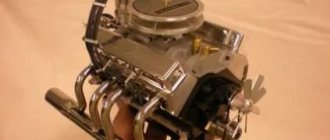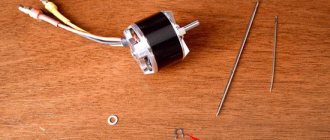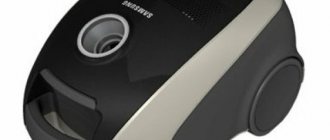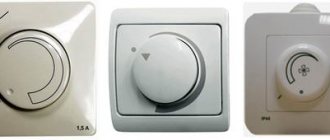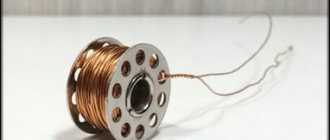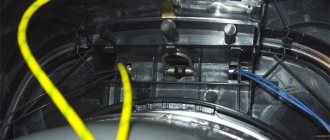What is a magnetic motor
In the scientific world, perpetual motion machines are divided into two groups: the first and second types.
And if with the first everything is relatively clear - this is rather an element of fantastic works, then the second is very real. Let's start with the fact that the first type of engine is a kind of utopian thing capable of extracting energy from nothing. But the second type is based on very real things. This is an attempt to extract and use the energy of everything that surrounds us: the sun, water, wind and, of course, the magnetic field. Many scientists from different countries and in different eras tried not only to explain the possibilities of magnetic fields, but also to implement some kind of perpetual motion machine powered by these very fields. The interesting thing is that many of them have achieved quite impressive results in this area. Names such as Nikola Tesla, Vasily Shkondin, Nikolai Lazarev are well known not only in a narrow circle of specialists and adherents of the creation of a perpetual motion machine.
Of particular interest to them were permanent magnets capable of renewing energy from the world's ether. Of course, no one on Earth has yet been able to prove anything significant, but thanks to studying the nature of permanent magnets, humanity has a real chance to get closer to using a colossal source of energy in the form of permanent magnets.
And although the magnetic topic is still far from being fully studied, there are many inventions, theories and scientifically based hypotheses regarding perpetual motion. At the same time, there are many impressive devices passed off as such. The magnet engine itself already exists, although not in the form in which we would like, because after some time the magnets still lose their magnetic properties. But, despite the laws of physics, scientists were able to create something reliable that works using the energy generated by magnetic fields.
Today there are several types of linear motors that differ in their structure and technology, but operate on the same principles . These include:
- Operating solely due to the action of magnetic fields, without control devices and without external energy consumption;
- Pulse action, which already have both control devices and an additional power source;
- Devices that combine the operating principles of both engines.
Magnetic engine. Reality vs Illusion
Background.
So, what do we have today?
A search query on the topic “working magnetic motor” returns just under one million pages. What does this mean? Most likely, this suggests that only in Russia hundreds of thousands of people were able to create a prototype, test it, test it... Or?
Here the question itself came up. Why does everyone know how to make a magnetic engine, but we still pour gasoline into our cars, and still invest huge amounts of money in the development and maintenance of nuclear and hydroelectric power plants. Why does everyone buy a diesel electric generator for their dacha if there is a magnetic alternative? Why?
I asked myself this question for a long time, and every time I received the same answer. A magnetic engine is not beneficial for oil producing corporations, manufacturers of internal combustion engines, management companies at power plants, etc. Logical and understandable.
On the Internet and through friends, I found at least half a hundred drawings. They all work the same way.
The placement of magnets, angle, size, etc. depends on the imagination of the creator of the drawing.
Everything ingenious is simple!
I bought neodymium magnets. I deliberately chose something more powerful just to get it going, just to get it going. The theory of the magnetic field is more or less clear. That is, there is “North”, there is “South”. "North" attracts "South", "South" repels "South"
I decided to assemble a prototype according to the principle “South” repels “South”.
So, based on the materials for assembly, I got this:
1. Neodymium magnets 20 pcs. (Tearing force up to 3.0 kg.)
3. Copper wire (for shielding the “North”, or rather reducing power. Complete shielding is not possible.
4. Glue (and double-sided tape, just in case)
5. Fastening for magnets
► I started everything with a drawing. Having previously assessed the strength of the magnet, I decided that with such power 8 pieces per disk would be enough.
► Printed out the drawing, cut it out, pasted it onto the disk, and transferred the drawing directly onto the disk using a stationery knife.
► Made copper brackets (to try to minimize the attraction from the opposite pole)
The frame is assembled.
But I no longer attached it to the bearing. Of course, out of annoyance and disappointment, I hung the disk on a pencil and tried to twist the magnet in order to activate the engine, BUT, this was already, as it were, to calm the brain.
Having finished gluing the last magnet, my subconscious suddenly said to me: “Well, well... do you think you’re the smartest?”
For a fraction of a second, I realized that the engine would not work, without even trying. Not only for me, but in general for everyone who is trying to assemble it based on the principle of pushing (or pulling) using a magnetic field.
I realized this as clearly as the fact that a person cannot walk on the surface of water (although from a distance it seems that why not))).
There are such moments in life - insights. When suddenly it becomes clear. This is what is “clear” when there is no need to check.
Accordingly, I tore out the magnets (because they are cool), threw the structure into the trash can and went to bed.
In the morning, the very next day, I made a sketch of the interaction of two magnets to answer the question why we still cannot switch to magnetic traction.)
Description of interaction
1. The figure shows the interaction of magnetic fields. When “South” interacts with “South,” the magnets repel, but at the same time, “South” attracts “North.”
A simple experiment. If you take two magnets, one magnet in each hand, and point them towards each other with one charge, a repulsive effect is created. But at the same time, no matter how strong the repulsive effect may seem, magnets simultaneously attract each other with different poles. This is confirmed by the fact that if you release one of the magnets, it will not fly away under the influence of a repulsive force, but will instantly turn over with the opposite pole and stick to the magnet, which remains motionless in the other hand.
2. No matter how we arrange the magnets, the interaction between them always occurs at both poles. “South” pushes, and “North” at this moment attracts. Both poles are equivalent in nature, and the field itself is one whole. Therefore, if I may say so, the efficiency is zero.
What if we assume that in the presence of a unipolar magnet, you can start the engine. Is a unipolar magnet possible? On the one hand, many argue that this is the same as a stick with one end.
On the other hand, at the tip of a friend, I found several articles on this topic. More precisely, there is this news: —— Researchers from Imperial College London have obtained a structure that works like a single-pole magnet, achieving a feat that has not been achieved by scientists for many decades. The researchers say their new study, published in Nature Physics, brings them closer to isolating a 'magnetic monopole.' ——
I couldn't find where to buy it. But I made a “theoretical” drawing. That is, it was as if two unipolar magnets interacted in the engine.
3. The picture shows that if we build a motor on unipolar magnets, according to the same principle, then it will also not be able to spin.
This happens because, in order for the magnets to push away from each other and continue to do so, each time they approach each other during rotation, the magnet must overcome resistance / braking equal in strength to the push .
Myth or reality?
Perpetual motion is familiar to almost everyone from school, only in physics lessons it was clearly stated that it is impossible to achieve practical implementation due to friction forces in moving elements. Among the modern developments of magnetic motors, self-supporting models are presented, in which the magnetic flux independently creates a rotational force and continues to support itself throughout the entire operation process. But the main stumbling block is the efficiency of any motor, including magnetic, since it never reaches 100%. Over time, the engine will still stop.
Therefore, all practical models require repeated intervention after a certain time or some third-party elements operating from an independent power source. The most likely option for fuel-free engines and generators is a magnetic machine. In which the main driving force will be the magnetic interaction between permanent magnets, electromagnetic fields or ferromagnetic materials.
A current example of implementation is decorative decorations made in the form of constantly moving balls, frames or other structures. But for them to work, it is necessary to use batteries that supply direct current to the electromagnets. Therefore, next we will consider the principle of action that gives the most encouraging expectations.
What should a real magnetic motor be like?
In general, such a device looks like this.
- Inductor.
- The magnet is movable.
- Coil slots.
- Central axis;
- Ball bearing;
- Racks.
- Discs;
- Permanent magnets;
- Magnetic closing discs;
- Pulley;
- Drive belt.
- Magnetic engine.
Any device that is made on a similar principle can be quite successfully used to generate truly anomalous electrical and mechanical energy. Moreover, if you use it as a generator electrical unit, then it is capable of generating electricity of such power that significantly exceeds a similar product in the form of a mechanical drive motor.
Now let’s take a closer look at what a magnetic motor actually is, and also why many people are trying to develop and implement this design, seeing a tempting future in it. Indeed, a real engine of this design must operate exclusively on magnets, while directly using their constantly released energy to move all internal mechanisms.
Important: the main problem with various designs based specifically on the use of permanent magnets is that they tend to strive for a static position called equilibrium.
When two sufficiently strong magnets are screwed side by side, they will move only until the moment when the maximum attraction between the poles is achieved at the minimum possible distance. In reality, they will simply turn to each other. Therefore, every inventor of various magnetic motors tries to make the attraction of magnets variable due to the mechanical properties of the motor itself or uses a kind of shielding function.
At the same time, magnetic motors in their pure form are very good in their essence. And if you add a relay and a control circuit to them, use earth gravity and imbalance, then they become truly ideal. They can safely be called “eternal” sources of supplied free energy! There are hundreds of examples of all kinds of magnetic motors, ranging from the most primitive ones, which can be assembled with your own hands, to Japanese serial copies.
Design and principle of operation
Today there are quite a large number of magnetic motors, some of them are similar, others have a fundamentally different design.
For example, we will consider the most obvious option:
Operating principle of a magnetic motor
As you can see in the figure, the motor consists of the following components:
- There is only one stator magnet and it is located on a spring pendulum, but such placement is required only for experimental purposes. If the weight of the rotor turns out to be sufficient, then the inertia of movement will be enough to overcome the smallest distance between the magnets and the stator can have a stationary magnet without a pendulum.
- Disc-type rotor made of non-magnetic material.
- Permanent magnets mounted on a snail-shaped rotor in the same position.
- Ballast is any weighty object that will provide the necessary inertia (in working models, this function can be performed by a load).
All that is needed for the operation of such a unit is to move the stator magnet a sufficient distance to the rotor at the point of greatest distance, as shown in the figure. After this, the magnets will begin to attract as the snail shape approaches in a circle, and the rotor will begin to rotate. The smaller the size of the magnets and the smoother the shape, the easier the movement will occur. At the point of maximum approach, a “dog” is installed on the disk, which will shift the pendulum from its normal position so that the magnets are not attracted to a static position.
Permanent magnet synchronous motor
Design of a synchronous motor with magnets
One of the main types of electric motors is synchronous, the rotation frequency of the magnetic fields of the stator and rotor are equal. In a conventional electromagnetic motor, both of these parts consist of windings on plates. But if the design of the armature is changed and permanent magnets are installed instead of the coil, then you can get an interesting, efficient, operating model of a synchronous motor. The stator has the usual layout of a magnetic circuit of plates and windings, in which a rotating magnetic field from an electric current can be generated. The rotor creates a constant field that interacts with the previous one and creates torque.
It should also be noted that depending on the circuit, the relative position of the stator and armature may change, for example, the latter will be made in the form of an outer shell. To start the motor from current from the network, a circuit consisting of a magnetic starter (relay, contactor) and a thermal protective relay is used.
Source
Modern classification of perpetual motion machines
- A perpetual motion machine of the first kind
is an engine (an imaginary machine) capable of endlessly doing work without consuming fuel or other energy resources. Their existence contradicts the first law of thermodynamics. According to the law of conservation of energy, all attempts to create such an engine are doomed to failure. - A perpetual motion machine of the second kind
is an imaginary machine that, when put into motion, would transform into work all the heat extracted from surrounding bodies (see Maxwell's Demon). They contradict the second law of thermodynamics. According to the Second Law of Thermodynamics, all attempts to create such an engine are doomed to failure.
What is a perpetual motion machine?
It is difficult to imagine modern human life without the use of special machines that make people’s lives much easier. With the help of such machines, people cultivate the land, extract oil, ore, and also simply move around. That is, the main task of such machines is to do work. In any machines and mechanisms, before doing any work, any energy is transferred from one type to another. But there is one caveat: it is impossible to obtain more energy of one type than another in any transformation, since this contradicts the laws of physics. Thus, it is impossible to create a perpetual motion machine.
Where does the energy in the Bedini generator come from?
But what does the phrase “perpetual motion machine” mean? A perpetual motion machine is one in which the final result of the transformation of energy of a type produces more than was present at the beginning of the process. This question of a perpetual motion machine occupies a special place in science, although it cannot exist. This rather paradoxical fact is justified by the fact that all the quests of scientists in the hope of inventing a perpetual motion machine go back more than 8 centuries. These searches are connected primarily with the fact that there are certain ideas about the most common concept of energy physics.
Perpetual motion machine and scientists, practitioners
The history of the perpetual motion machine
The first mention of the creation of such a device appeared in India in the 7th century, but the first practical attempts to create it appeared in the 8th century in Europe. Naturally, the creation of such a device would significantly accelerate the development of energy science.
In those days, such a power unit could not only lift various loads, but also turn mills, as well as water pumps. In the 20th century, a significant discovery occurred, which gave impetus to the creation of a power unit - the discovery of a permanent magnet with the subsequent study of its capabilities.
The motor model based on it was supposed to work for an unlimited amount of time, which is why it was called eternal. But be that as it may, nothing lasts forever, since any part or detail can malfunction, therefore, the word “eternally” must only be understood as meaning that it must work without interruption, without implying any costs, including fuel.
Now it is impossible to accurately determine the creator of the first perpetual mechanism, which was based on magnets. Naturally, it is very different from the modern one, but there are some opinions that the first mention of a power unit using magnets is in the treatise of Bhskara Acharya, a mathematician from India.
The first information about the appearance of such a device in Europe appeared in the 13th century. The information came from Villard d'Honnecourt, an eminent engineer and architect. After his death, the inventor left his notebook to his descendants, which contained various drawings of not only structures, but also mechanisms for lifting loads and the actual first device using magnets, which vaguely resembles a perpetual motion machine.
How to make a perpetual motion machine
Homemade generators with neodymium magnets are basically the same type in terms of their operating principle. The standard option is the axial type.
It is based on a car hub with brake discs. Such a base will become reliable and powerful.
When deciding to use it, the hub should be completely disassembled and checked to see if there is enough lubrication, and if necessary, clean off the rust. Then the finished device will be pleasant to paint, and it will take on a “homey”, well-groomed appearance.
Magnets are glued to the rotor discs. The author of the design presented in the photo in the article took twenty pieces measuring 25*8 millimeters. A different number of poles can be used.
In a single-phase device, the number of poles must be equal to the number of magnets. In three-phase, the ratio of two to three or four to three must be observed. Magnets are placed with alternating poles. They must be precisely located. To do this, you can draw a template on paper, cut it out and accurately transfer it to the disk.
To avoid mixing up the poles, make notes with a marker. To do this, magnets are brought on one side: the one that attracts is designated with a “+” sign, and the one that repels is marked with a “-”. Magnets must attract, that is, those located opposite each other must have different poles.
Usually superglue or something similar is used, and after sticking it is filled with more epoxy resin to increase strength, after making “borders” so that it does not leak out.
Real prospects for creating a perpetual motion machine using magnets
Opponents of the theory of creating a perpetual motion machine say that it is impossible to violate the law of conservation of energy. Indeed, there are absolutely no prerequisites for obtaining energy from nothing. On the other hand, a magnetic field is not emptiness at all, but a special type of matter, the density of which can reach 280 kJ/m³. It is this value that is the potential energy that a perpetual motion machine on permanent magnets can theoretically use. Despite the lack of ready-made samples in the public domain, numerous patents indicate the possibility of the existence of such devices, as well as the fact of the presence of promising developments that have remained classified since Soviet times.
Norwegian artist Reidar Finsrud created his own version of a perpetual motion machine using magnets. Famous physicists and scientists contributed to the creation of such electric generators: Nikola Tesla, Minato, Vasily Shkondin, Howard Johnson and Nikolai Lazarev. It should be noted right away that engines created with the help of magnets are called “eternal” conventionally - the magnet loses its properties after a couple of hundred years, and along with it the generator will stop working.
Characteristics of neodymium magnets
But let's first find out what magnets are. They appeared not so long ago. It has been possible to purchase magnets in stores since the nineties of the last century. They are made of neodymium, boron and iron. The main element, of course, is neodymium. It is a metal of the lanthanide group, with the help of which magnets acquire enormous adhesive force. If you take two large pieces and pull them together, it will be almost impossible to separate them.
Mostly, of course, there are miniature species on sale. In any gift shop you can find balls (or other shapes) made of this metal. The high price of neodymium magnets is explained by the complexity of extracting raw materials and the technology of their production. If a ball with a diameter of 3-5 millimeters will cost only a few rubles, then for a magnet with a diameter of 20 millimeters and above you will have to pay 500 rubles or more.
Neodymium magnets are produced in special furnaces, where the process occurs without oxygen, in a vacuum or an atmosphere with an inert gas. The most common are magnets with axial magnetization, in which the field vector is directed along one of the planes where the thickness is measured.
The characteristics of neodymium magnets are very valuable, but they can easily be damaged beyond repair. So, a strong blow can deprive them of all their properties. Therefore, you need to try to avoid falls. Also, different species have their own temperature limit, which varies from eighty to two hundred and fifty degrees. At temperatures above the limiting temperature, the magnet loses its properties.
Proper and careful use is the key to maintaining quality for thirty years or more. Natural demagnetization is only one percent per year.
The most famous analogues of perpetual motion magnets
Numerous enthusiasts are trying to create a perpetual motion machine using magnets with their own hands according to a scheme in which rotational motion is ensured by the interaction of magnetic fields. As you know, poles of the same name repel each other. It is this effect that underlies almost all such developments. Proper use of the energy of repulsion of like poles of a magnet and attraction of unlike poles in a closed loop allows for long-term non-stop rotation of the installation without the application of external force.
Application of neodymium magnets
They are often used in experiments in physics and electrical engineering. But in practice, these magnets have already found wide application, for example, in industry. They can often be found as part of souvenir products.
Their high degree of traction makes them very useful when searching for metal objects found underground. Therefore, many search engines use equipment using neodymium magnets to find equipment left over from war times.
If old acoustic speakers barely work, then sometimes it’s worth adding neodymium magnets to ferrite magnets, and the equipment will sound great again.
Likewise, you can try replacing the old magnets on the engine or generator. Then there is a chance that the technology will work much better. Consumption will even decrease.
Humanity has been searching for a perpetual motion machine for a long time. On neodymium magnets, as some believe, the technology may well take on real shape.
Types of magnetic motors and their circuits
Today there are many models of fuel-free generators, electrical machines and motors, whose operating principle is based on the natural properties of permanent magnets. Some options were designed by eminent scientists, whose achievements became the founding stone in the foundation of science. Therefore, next we will consider the most popular of them.
Magnetic unipolar Tesla motor
An outstanding scientist who at one time became a pioneer in the field of electrical supply. current, asynchronous electric motors on alternating current, did not deprive his attention and calculations of the issue of an eternal source of energy. In the scientific community, this invention is referred to differently as the Tesla unipolar generator.
Initially, the calculation of this type of device was carried out by Faraday, but its prototype, with a similar principle of operation, did not have the proper efficiency and stability of operation, that is, it did not achieve the goal. The term “unipolar” means that in the circuit of the unit, a ring, disk (plate) or cylinder conductor is located in a circuit between the poles of a permanent magnet.
Tesla magnetic motor and its circuit
In the diagram, which was presented in the original patent, there is a design with two shafts on which two pairs of magnets are placed: B, B create a conditionally positive field, and C, C - a negative one. Between them there are unipolar flanged disks used as generating conductors. Both unipolar disks are connected to each other by a thin metal strip, which can, in principle, be used as a conductor (in the original) or to rotate the disk.
Minato
This example cannot be called a self-rotating engine, since its operation requires constant supply of electrical energy. But such an electromagnetic motor allows you to obtain significant benefits by using a minimum of electricity to perform physical work.
Minato engine diagram
As you can see in the diagram, a feature of this type is an unusual approach to the placement of magnets on the rotor. To interact with it, magnetic pulses appear on the stator due to a short-term supply of electricity through a relay or semiconductor device.
In this case, the rotor will rotate until its elements are demagnetized. Today, developments are still underway to improve and increase the efficiency of the device, so it cannot be called completely completed.
"Testatika" by Paul Bauman
One of the most famous developments is Bauman’s “testatics”. The device resembles in its design a simple electrostatic machine with Leyden jars. “Testatik” consists of a pair of acrylic disks (ordinary music records were used for the first experiments), onto which 36 narrow and thin strips of aluminum are glued.
A still from a documentary: a 1000-watt lamp was connected to Testatika. On the left is inventor Paul Bauman. After the discs were pushed with fingers in opposite directions, the running engine continued to run indefinitely for a long time with a stable rotation speed of the discs at 50-70 rpm. In the electrical circuit of Paul Bauman's generator, it is possible to develop a voltage of up to 350 volts with a current of up to 30 Amperes. Due to its low mechanical power, it is more likely not a perpetual motion machine, but a magnetic generator.
Lazarev rotary ring
A perpetual motion machine based on magnets based on Lazarev’s project is very popular. Today, his rotary ring is considered a device whose implementation is as close as possible to the concept of a perpetual motion machine. An important advantage of Lazarev’s development is that even without specialized knowledge and serious expenses, you can assemble a similar perpetual motion machine using neodymium magnets with your own hands. Such a device is a container divided into two parts by a porous partition. The author of the development used a special ceramic disk as a partition. A tube is installed in it, and liquid is poured into the container. Volatile solutions (for example, gasoline) are ideal for this, but plain tap water can also be used.
The mechanism of operation of the Lazarev engine is very simple. First, the liquid is fed through a partition down the container. Under pressure, the solution begins to rise through the tube. Under the resulting dropper, a wheel with blades is placed, on which magnets are installed. Under the force of falling drops, the wheel rotates, forming a constant magnetic field. Based on this development, a self-rotating magnetic electric motor was successfully created, for which one domestic enterprise registered a patent.
Howard Johnson
In his research, Johnson was guided by the theory of the flow of unpaired electrons acting in any magnet. In its motor, the stator windings are formed from magnetic tracks. In practice, these units have been implemented in the design of rotary and linear motors. An example of such a device is shown in the figure below:
Johnson engine
As you can see, both the stator and the rotor are installed on the axis of rotation in the engine, so classically the shaft will not rotate here. On the stator, the magnets are turned with the same pole towards the rotor ones, so they interact using repulsive forces. The peculiarity of the scientist’s work was the lengthy calculation of the distances and gaps between the main elements of the motor.
Anti-gravity magnetic Lorentz motor
You can make a Lorenz engine yourself using simple materials. If you want to assemble a perpetual motion machine using magnets with your own hands, then pay attention to Lorenz’s developments. The anti-gravity magnetic engine of his authorship is considered the simplest to implement. This device is based on the use of two disks with different charges. They are placed halfway into a hemispherical magnetic shield made of superconductor, which completely pushes out magnetic fields. Such a device is necessary to isolate the disk halves from the external magnetic field. This engine is started by forcing the disks to rotate towards each other. In fact, the disks in the resulting system are a pair of half-turns with current, the open parts of which will be affected by Lorentz forces.
Generator Perendeva
Another controversial example of the action of magnetic forces is the self-rotating magnetic motor Perendev. Its creator, Mike Brady, before criminal proceedings began against him, even managed to acquire a patent, create a company of the same name (Perendev) and put the business on stream. If you analyze the circuit and principle presented in the patent, or the drawings of home-made electrical devices. engines, the rotor and stator have the shape of a disk and an outer ring. Individual magnets are placed on them along a circular path, maintaining a certain angle relative to the central axis. Due to the interaction of the field of the individual magnets of the stator and rotor Perendev, a moment arises and their mutual movement (rotation) occurs. Calculation of a magnet chain comes down to determining the divergence angle.
Sweet Floyd Vacuum Triode Amplifier
The difficulty in reproducing Sweet Floyd's device lies not in its design, but in the magnet manufacturing technology. This motor is based on two ferrite magnets with dimensions of 10x15x2.5 cm, as well as coils without cores, one of which is working with several hundred turns, and two more are exciting. A simple 9V pocket battery is required to run the triode amplifier. After switching on, the device can work for a very long time, powering itself by analogy with a self-generator. According to Sweet Floyd, from a working installation it was possible to obtain an output voltage of 120 volts with a frequency of 60 Hz, the power of which reached 1 kW.
Shkondin wheel motor
If you are looking for interesting options on how to make a perpetual motion machine from magnets, then be sure to pay attention to the development of Shkondin. The design of its linear motor can be described as a “wheel within a wheel”. This simple yet powerful device is successfully used for bicycles, scooters and other vehicles. A pulse-inertial motor-wheel is a combination of magnetic tracks, the parameters of which dynamically change by switching the windings of electromagnets.
General diagram of a linear motor by Vasily Shkondin The key elements of the Shkondin device are an external rotor and a stator of a special design: the arrangement of 11 pairs of neodymium magnets in a perpetual motion machine is made in a circle, which forms a total of 22 poles. The rotor is equipped with 6 horseshoe-shaped electromagnets, which are installed in pairs and offset to each other by 120°. There is the same distance between the poles of the electromagnets on the rotor and between the magnets on the stator. Changing the position of the poles of the magnets relative to each other leads to the creation of a gradient of magnetic field strength, forming a torque. The neodymium magnet in the perpetual motion machine based on the design of the Shkondin project is of key importance. When an electromagnet passes through the axes of neodymium magnets, a magnetic pole is formed, which is the same in relation to the overcome pole and opposite in relation to the pole of the next magnet. It turns out that an electromagnet always repels from the previous magnet and is attracted to the next one. Such influences ensure the rotation of the rim. De-energizing the electromagnet when it reaches the magnet axis on the stator is ensured by placing a current collector at this point.
A resident of Pushchino, Vasily Shkondin, invented not a perpetual motion machine, but highly efficient motor-wheels for transport and electricity generators. The efficiency of the Shkondin engine is 83%. Of course, this is not yet a completely energy-independent perpetual motion machine on neodymium magnets, but it is a very serious and convincing step in the right direction. Thanks to the design features of the device, when idling, it is possible to return some of the energy to the batteries (recovery function).
Svintitsky
Back in the late 90s, a Ukrainian designer would offer a model of a self-rotating magnetic motor, which became a real breakthrough in technology. He used the Wankel asynchronous motor as a basis, which failed to solve the problem of overcoming 360° rotation.
Igor Svintitsky solved this problem and received a patent, contacted a number of companies, but no one was interested in the asynchronous magnetic miracle of technology, so the project was closed and not a single company undertook its large-scale testing.
John Searle
What distinguishes such a magnetic motor from an electric motor is the interaction exclusively of the magnetic field of the stator and rotor. But the latter is performed by stacked cylinders with tablets made of a special alloy, which create magnetic lines of force in the opposite direction. It can be considered a synchronous motor, since there is no frequency difference in it.
Searle engine
The poles of permanent magnets are arranged so that one pushes the next, and so on. A chain reaction begins, driving the entire magnetic engine system until there is enough magnetic force for at least one cylinder.
Magnetic gravity engine
Everything here is a little simpler than in the previous version. To create such a device, you need permanent magnets and weights of certain parameters. It works like this : in the center of the rotating wheel there is a main magnet, and around it (at the edges of the wheel) auxiliary magnets and weights are located. The magnets interact with each other, and the loads are in motion and move either closer to the center of rotation or further. Thus, the center of mass shifts and the wheel rotates.
Alekseenko
An interesting version of a magnetic engine was presented by the scientist Alekseenko, who created a device with rotor magnets of an unusual shape.
Alekseenko engine
As you can see in the picture, the magnets have an unusual curved shape, which brings the opposite poles as close as possible. Which makes the magnetic fluxes at the point of convergence much stronger. When rotation begins, the repulsion of the poles turns out to be much greater, which should ensure continuous movement in a circle.
Permanent magnet synchronous motor
A synchronous motor at constant frequencies is the main type of electric motor, where the rotation speeds of the rotor and stator are at the same level. A classic electromagnetic power unit has windings on plates, but if you change the design of the armature and install permanent magnets instead of a coil, then you get a fairly effective model of a synchronous power unit.
The stator circuit has a classic magnetic circuit layout, which includes a winding and plates, where the magnetic field of the electric current accumulates. This field interacts with the constant field of the rotor, which creates torque.
Among other things, it is necessary to take into account that, based on the specific type of circuit, the location of the armature and stator can be changed, for example, the first one can be made in the form of an outer shell. To activate the motor from the mains current, a circuit of a magnetic starter and a thermal protective relay is used.
Anti-gravity magnetic Lorentz motor
You can make a Lorenz engine yourself using simple materials.
If you want to assemble a perpetual motion machine using magnets with your own hands, then pay attention to Lorenz’s developments. The anti-gravity magnetic engine of his authorship is considered the simplest to implement. This device is based on the use of two disks with different charges. They are placed halfway into a hemispherical magnetic shield made of superconductor, which completely pushes out magnetic fields. Such a device is necessary to isolate the disk halves from the external magnetic field. This engine is started by forcing the disks to rotate towards each other. In fact, the disks in the resulting system are a pair of half-turns with current, the open parts of which will be affected by Lorentz forces.
How to assemble an engine yourself
Homemade versions of such devices are no less popular. They are quite often found on the Internet, not only as working diagrams, but also specifically designed and working units.
One of the easiest devices to create at home, it is created using 3 interconnected shafts, which are fastened in such a way that the central one is rotated to those on the sides.
At the center of the shaft in the middle is attached a disk of lucite, 4 inches in diameter and 0.5 inches thick. Those shafts that are located on the sides also have 2-inch disks, on which there are magnets of 4 pieces on each, and on the central one there are twice as many - 8 pieces.
The axis must be in a parallel plane in relation to the shafts. The ends near the wheels pass with a flash of 1 minute. If you start moving the wheels, then the ends of the magnetic axis will begin to synchronize. To give acceleration, it is necessary to place an aluminum block at the base of the device. One end of it should slightly touch the magnetic parts. As soon as the design is improved in this way, the unit will rotate faster, by half a revolution per second.
Watch this video on YouTube
Watch this video on YouTube
The drives were installed so that the shafts rotated similarly to each other. If you try to influence the system with a finger or some other object, then it will stop.
Guided by this scheme, you can create a magnetic unit on your own.
What are the advantages and disadvantages of actually working magnetic motors?
Among the advantages of such units, the following can be noted:
- Full autonomy with maximum fuel economy.
- A powerful device using magnets can provide a room with energy of 10 kW or more.
- Such an engine runs until complete operational wear.
So far, such engines are not without their drawbacks:
- The magnetic field can negatively affect human health and well-being.
- A large number of models cannot work effectively in domestic conditions.
- There are slight difficulties in connecting even a ready-made unit.
- The cost of such engines is quite high.
Such units are no longer a fiction and will soon be able to replace conventional power units. At the moment, they cannot compete with conventional engines, but there is potential for development.
Why is a perpetual motion machine impossible?
When it comes to perpetual motion, the main problem is confusion in wording. For some reason, some people believe that a perpetual motion machine is a machine that moves constantly, that it never stops. This is true, but only partly.
Indeed, if you once installed and started a perpetual motion machine, it will have to work until the “end of time.” To call the life of an engine “long” or “long” is to greatly understate its capabilities. However, it is no secret that a perpetual motion machine does not and cannot exist in nature.
But what about planets, stars and galaxies? After all, all these objects are in constant motion, and this motion will exist constantly as long as the Universe exists, until the time of eternal, endless, absolute darkness comes. Isn't this a perpetual motion machine?
It is in answering this question that the confusion in wording that we talked about at the beginning is revealed. Perpetual motion is not a perpetual motion machine! The movement itself in the Universe is “eternal”. Movement will exist as long as the Universe exists. But a so-called perpetual motion machine is a device that not only moves endlessly, it also produces energy as it moves. Therefore, the definition given by Wikipedia is correct:
| A perpetual motion machine is an imaginary device that produces useful work greater than the amount of energy supplied to this device. |
On the Internet you can find many projects that offer models of perpetual motion machines. Looking at these structures, you might think that they are able to work without stopping, constantly producing energy. If we actually succeeded in designing a perpetual motion machine, the consequences would be staggering. It would be an eternal source of energy, moreover, free energy. Unfortunately, due to the fundamental laws of physics of our Universe, the creation of perpetual motion machines is impossible. Let's figure out why this is so.
Perpetual motion machine Perendeva
An alternative high quality engine that produces energy exclusively through magnets. The base is a static and dynamic circle on which several magnets are located in the intended order. A self-repulsive force arises between them, due to which the rotation of the movable circle occurs. Such a perpetual motion machine is considered very profitable to operate.
Perpetual magnetic engine Perendeva
There are many other EMDs that are similar in principle of operation and design. All of them are still imperfect, since they are not able to function for a long time without any external impulses. Therefore, work on the creation of eternal generators does not stop.
Video to help
Sources
- https://220v.guru/elementy-elektriki/dvigateli/magnitnyy-vechnyy-dvigatel-delaem-svoimi-rukami.html
- https://www.asutpp.ru/magnitnyj-dvigatel.html
- https://www.syl.ru/article/189970/new_kak-sdelat-vechnyiy-dvigatel-svoimi-rukami
- https://dic.academic.ru/dic.nsf/ruwiki/839655
- https://odinelectric.ru/knowledgebase/chto-takoe-magnitniy-dvigatel
- https://MirMagnitov.ru/blog/primenenie-magnitov/vechnyy-dvigatel-na-magnitakh/
- https://electricvdele.ru/elektrooborudovanie/elektrodvigateli/dvigatel-na-postoyannyh-magnitah.html
- https://220v.guru/elementy-elektriki/dvigateli/vechnyy-dvigatel-svoimi-rukami-ego-opisanie-i-vidy.html
- https://yourtutor.info/%D0%BF%D0%BE%D1%87%D0%B5%D0%BC%D1%83-%D0%B2%D0%B5%D1%87%D0%BD% D1%8B%D0%B9-%D0%B4%D0%B2%D0%B8%D0%B3%D0%B0%D1%82%D0%B5%D0%BB%D1%8C-%D0%BD% D0%B5%D0%B2%D0%BE%D0%B7%D0%BC%D0%BE%D0%B6%D0%B5%D0%BD
[collapse]
